
ELIZA is an early natural language processing computer program developed from 1964 to 1967 at MIT by Joseph Weizenbaum. Created to explore communication between humans and machines, ELIZA simulated conversation by using a pattern matching and substitution methodology that gave users an illusion of understanding on the part of the program, but had no representation that could be considered really understanding what was being said by either party. Whereas the ELIZA program itself was written (originally) in MAD-SLIP, the pattern matching directives that contained most of its language capability were provided in separate "scripts", represented in a lisp-like representation. The most famous script, DOCTOR, simulated a psychotherapist of the Rogerian school, and used rules, dictated in the script, to respond with non-directional questions to user inputs. As such, ELIZA was one of the first chatterbots and one of the first programs capable of attempting the Turing test.

Digital art refers to any artistic work or practice that uses digital technology as part of the creative or presentation process. It can also refer to computational art that uses and engages with digital media. Since the 1960s, various names have been used to describe digital art, including computer art, electronic art, multimedia art, and new media art.
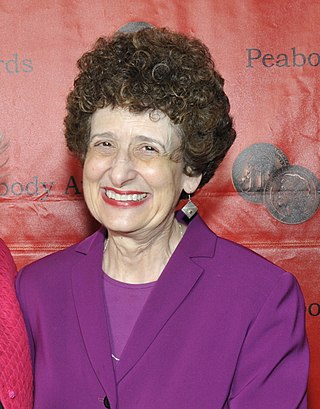
Janet Horowitz Murray is an American professor in the School of Literature, Media, and Communication at the Georgia Institute of Technology. Before coming to Georgia Tech in 1999, she was a Senior Research Scientist in the Center for Educational Computing Initiatives at MIT, where she taught humanities and led advanced interactive design projects since 1971. She is well known as an early developer of humanities computing applications, a seminal theorist of digital media, and an advocate of new educational programs in digital media.
Ergodic literature is a term coined by Espen J. Aarseth in his 1997 book Cybertext—Perspectives on Ergodic Literature to describe literature in which nontrivial effort is required for the reader to traverse the text. The term is derived from the Greek words ergon, meaning "work", and hodos, meaning "path". It is associated with the concept of cybertext and describes a cybertextual process that includes a semiotic sequence that the concepts of "reading" do not account for.

Espen J. Aarseth is a Norwegian academic specializing in the fields of video game studies and electronic literature. Aarseth completed his doctorate at the University of Bergen. He co-founded the Department of Humanistic Informatics at the University of Bergen, and worked there until 2003, at which time he was a full professor.
Digital poetry is a form of electronic literature, displaying a wide range of approaches to poetry, with a prominent and crucial use of computers. Digital poetry can be available in form of CD-ROM, DVD, as installations in art galleries, in certain cases also recorded as digital video or films, as digital holograms, on the World Wide Web or Internet, and as mobile phone apps.
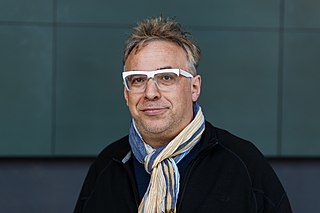
Lev Manovich is an artist, an author and a theorist of digital culture. He is a Distinguished Professor at the Graduate Center of the City University of New York. Manovich played a key role in creating four new research fields: new media studies (1991-), software studies (2001-), cultural analytics (2007-) and AI aesthetics (2018-). Manovich's current research focuses on generative media, AI culture, digital art, and media theory.
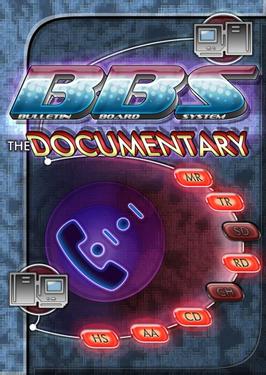
BBS: The Documentary is a 3-disc, 8-episode documentary about the subculture born from the creation of the bulletin board system (BBS) filmed by computer historian Jason Scott of textfiles.com.
Electronic literature or digital literature is a genre of literature where digital capabilities such as interactivity, multimodality or algorithmic text generation are used aesthetically. Works of electronic literature are usually intended to be read on digital devices, such as computers, tablets, and mobile phones. They cannot be easily printed, or cannot be printed at all, because elements crucial to the work cannot be carried over onto a printed version.
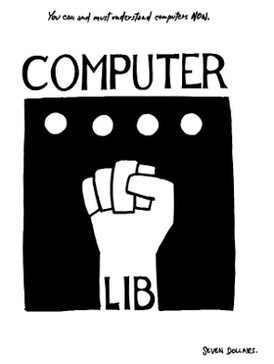
Computer Lib/Dream Machines is a 1974 book by Ted Nelson, printed as a two-front-cover paperback to indicate its "intertwingled" nature. Originally self-published by Nelson, it was republished with a foreword by Stewart Brand in 1987 by Microsoft Press.
Stuart Moulthrop is an innovator of electronic literature and hypertext fiction, both as a theoretician and as a writer. He is author of the hypertext fiction works Victory Garden (1992), which was on the front-page of the New York Times Book Review in 1993, Reagan Library (1999), and Hegirascope (1995), amongst many others. Moulthrop is currently a Professor of Digital Humanities in the Department of English, at the University of Wisconsin–Milwaukee. He also became a founding board member of the Electronic Literature Organization in 1999.

Interactive design is a user-oriented field of study that focuses on meaningful communication using media to create products through cyclical and collaborative processes between people and technology. Successful interactive designs have simple, clearly defined goals, a strong purpose and intuitive screen interface.

Nick Montfort is a poet and professor of digital media at MIT, where he directs a lab called The Trope Tank. He also holds a part-time position at the University of Bergen where he leads a node on computational narrative systems at the Center for Digital Narrative. Among his publications are seven books of computer-generated literature and six books from the MIT Press, several of which are collaborations. His work also includes digital projects, many of them in the form of short programs. He lives in New York City.
Software studies is an emerging interdisciplinary research field, which studies software systems and their social and cultural effects. The implementation and use of software has been studied in recent fields such as cyberculture, Internet studies, new media studies, and digital culture, yet prior to software studies, software was rarely ever addressed as a distinct object of study. To study software as an artifact, software studies draws upon methods and theory from the digital humanities and from computational perspectives on software. Methodologically, software studies usually differs from the approaches of computer science and software engineering, which concern themselves primarily with software in information theory and in practical application; however, these fields all share an emphasis on computer literacy, particularly in the areas of programming and source code. This emphasis on analysing software sources and processes often distinguishes software studies from new media studies, which is usually restricted to discussions of interfaces and observable effects.
Cybermethodology is a newly emergent field that focuses on the creative development and use of computational and technological research methodologies for the analysis of next-generation data sources such as the Internet. The first formal academic program in Cybermethodology is being developed by the University of California, Los Angeles.
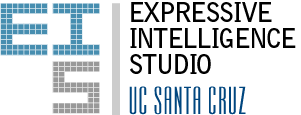
The Expressive Intelligence Studio is a research group at the University of California, Santa Cruz, established to conduct research in the field of game design technology. The studio is currently being run by Michael Mateas and Noah Wardrip-Fruin, who work closely with the students in their research.

Expressive Processing: Digital Fictions, Computer Games, and Software Studies is a digital media textbook authored by Noah Wardrip-Fruin and published through the MIT Press. Throughout the book Wardrip-Fruin takes a look into "expressive processing" elements that partake in digital media. Wardrip-Fruin attempts to explain expressive processing through the ELIZA effect, The Tale-Spin Effect, The SimCity Effect, and many other elements of interactive digital media.

New media art includes artworks designed and produced by means of electronic media technologies. It comprises virtual art, computer graphics, computer animation, digital art, interactive art, sound art, Internet art, video games, robotics, 3D printing, immersive installation and cyborg art. The term defines itself by the thereby created artwork, which differentiates itself from that deriving from conventional visual arts such as architecture, painting or sculpture.
Critical code studies (CCS) is an emerging academic subfield, related to software studies, digital humanities, cultural studies, computer science, human–computer interface, and the do-it-yourself maker culture. Its primary focus is on the cultural significance of computer code, without excluding or focusing solely upon the code's functional purpose. According to Mark C. Marino, it
is an approach that applies critical hermeneutics to the interpretation of computer code, program architecture, and documentation within a socio-historical context. CCS holds that lines of code are not value-neutral and can be analyzed using the theoretical approaches applied to other semiotic systems in addition to particular interpretive methods developed particularly for the discussions of programs.
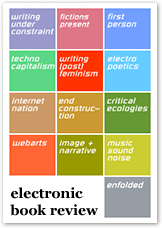
Electronic Book Review (ebr) is a peer-reviewed scholarly journal with emphasis on the digital. Founded in 1995 by Joseph Tabbi and Mark Amerika, the journal was one of the first to devote a lasting web presence to the discussion of literature, theory, criticism, and the arts.












